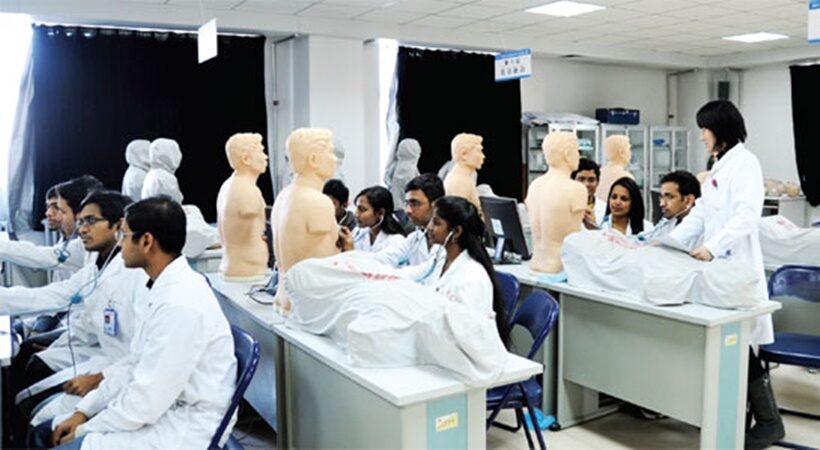With the beginning of the conflict in Ukraine, everybody’s gaze was turned toward the Indian medical students stranded in the country. Looking closer at the phenomenon, it becomes apparent that there were close ties between the former Soviet Union and the newly independent India after the end of the Second World War. Agreements on trade and the provision of Soviet technical assistance were signed between India and the USSR in 1953. One of the objectives was to train highly qualified national cadres in Soviet educational establishments. Starting from 20 students at the Moscow State University, the numbers quickly rose to 1375 between 1971 and 1980. Interestingly, after the RSFSR (Russian Soviet Federated Socialist Republic), the Ukrainian SSR received the highest number of Indian students.
The Soviet state used to provide free education to students and a small stipend to support their studies. The Soviet Union also focused more on the healthcare system, becoming the first country to provide complete health coverage schemes. The “Right to Health” became a constitutional right for the citizens of the Soviet Union that helped develop a robust medical infrastructure.
In the former Union of Soviet Socialist Republics (USSR), substantial infrastructure and educational institutions, specifically in medicine, were developed. These institutions provide world-class knowledge and excellent practical skills. When the former USSR disintegrated in December 1991, Ukraine emerged as one of the 15 new nations. It also had the second largest population and economy after Russia.
To fulfil their ambition of pursuing medical education, several students opt to study in countries in former Soviet countries, including those parts of Europe, where the admission process is easy compared to India, and the course fee is also much cheaper. The countries like Ukraine, Belarus, Kazakhstan, Kyrgyzstan, Russia and Romania have become favourite destinations for pursuing medical education.
Here are some of the reasons why Indian students have been opting to study in post-Soviet countries:
Insufficient Seats in Medical Institutions in India
The small number of MBBS seats in government-run medical colleges in India compared to the massive number of applicants means that many of them are unable to pursue their dream back home. The Government of India also has a list of universities in post-Soviet countries that are approved by the National Medical Commission (NMC).
Moreover, the medium of study is English for medical students in post-soviet countries, making it easy for Indian students to adapt to the new environments.
Most of the universities are affiliated with internationally established and recommended medical institutions like WHO (World Health Organization), IMED (International Medical Education Directory) of FIMER (Foundation for Advancement of International Medical Education and Research), and UNESCO (United Nations Educational, Scientific and Cultural Organization). This gives legitimacy to the MBBS degrees obtained in post-Soviet countries.
Low Cost:
A student has to spend between Rs 60 lakh and Rs 2 crores to complete MBBS in a private college in India; the MBBS courses can be completed within Rs 20 lakh in these countries. The Students opt to clear the Foreign Medical Graduate Exam in India after completing their courses. After a year of training as a house surgeon, the medical students can practice on par with other medical graduates in India.
No Entrance Exam or Donation:
Students seeking medical education in post-Soviet universities will not have to pay any donation charges to get admission. Also, there are no national medical entrance tests in these universities, and the students just have to meet the minimum eligibility criterion.



















